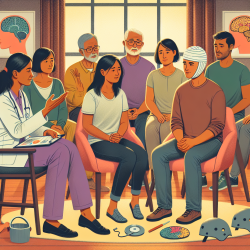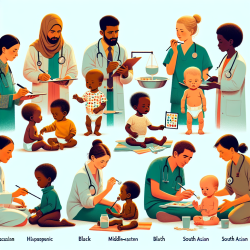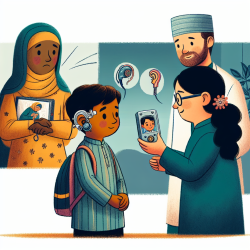In the complex and often challenging field of head-injury rehabilitation, the role of families cannot be overstated. The research article Working with Families of Head-Injured Patients by Corwin Boake and Cindy A. Roberts offers invaluable insights into the multifaceted approach required for effective therapy. This blog aims to distill key findings from their research and provide actionable strategies for therapists to enhance their practice and foster better outcomes for patients and their families.
Understanding the Family's Role in Rehabilitation
The article emphasizes that successful rehabilitation of head-injury patients extends beyond the patient-therapist dynamic to include the patient's family. Families play a critical role as caregivers, advocates, and partners in the therapeutic process. Recognizing and addressing the emotional, informational, and counseling needs of families is paramount for therapists in all disciplines.
Emotional Support: A Cornerstone of Effective Therapy
Therapists must be adept at providing emotional support to both patients and their families. This involves:
- Building trust by consistently addressing concerns and keeping families informed.
- Maintaining hope by highlighting patient strengths and progress.
- Accepting and validating the family's feelings and reactions without judgment.
These actions foster a therapeutic alliance that can significantly alleviate the stress and anxiety families face, promoting a more supportive environment for the patient's recovery.
Informing and Educating Families
Another critical aspect of working with head-injury patients is the education of their families. Many families lack a comprehensive understanding of brain injury, which can impede their ability to effectively advocate for their loved one. Therapists should:
- Invite families to participate in treatment sessions where possible.
- Explain therapy and assessment techniques clearly.
- Provide reading materials and hold educational classes tailored for families.
By demystifying the rehabilitation process and equipping families with the necessary knowledge, therapists can empower them to make informed decisions and actively contribute to the recovery journey.
Professional Family Counseling
The article also highlights the importance of professional family counseling. While not all families may have access to specialized counseling services, therapists should be vigilant in identifying those in dire need of such support. Issues such as marital strain, family conflicts, or self-destructive behaviors warrant immediate referral to professional counselors.
Adapting to Changing Family Needs
As patients progress through different stages of rehabilitation, the needs of their families evolve. Therapists must be flexible and responsive to these changing dynamics, adjusting their support and informational guidance accordingly. Whether in acute medical care, inpatient rehabilitation, or community re-entry, the emphasis on emotional support and education should be tailored to the specific context and challenges faced by the family.
Conclusion
The journey through head-injury rehabilitation is a shared endeavor between patients, families, and therapists. By fostering a collaborative environment, providing robust emotional support, and ensuring families are well-informed, therapists can significantly enhance the efficacy of rehabilitation efforts. The insights provided by Boake and Roberts serve as a valuable framework for therapists aiming to improve their practice and outcomes for head-injury patients and their families.
For a deeper understanding of the strategies and principles discussed, therapists are encouraged to read the original research article. To access Working with Families of Head-Injury Patients, please follow this link.










